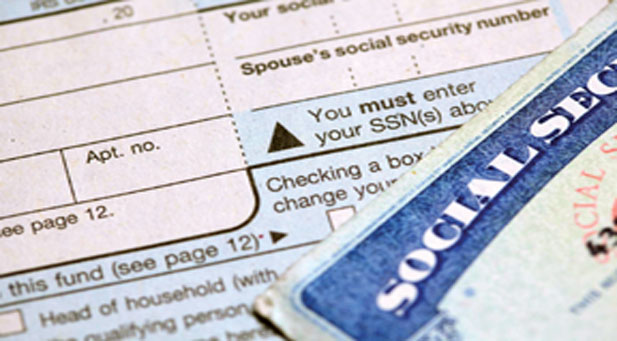
 What you must know about Social Security
What you must know about Social Security
For many Americans, Social Security benefits are the bedrock of retirement income. Maximizing that stream of income is critical to funding your retirement dreams.
The rules for claiming benefits can be complex, and recent changes to Social Security rules created a lot of confusion. But this guide will help you wade through the details. By educating yourself about Social Security, you can ensure that you claim the maximum amount to which you are entitled. Here are 10 essentials you need to know.
It’s an Age Thing
Your age when you collect Social Security has a big impact on the amount of money you ultimately get from the program. The key age to know is your full retirement age. For people born between 1943 and 1954, full retirement age is 66. It gradually climbs toward 67 if your birthday falls between 1955 and 1959. For those born in 1960 or later, full retirement age is 67. You can collect Social Security as soon as you turn 62, but taking benefits before full retirement age results in a permanent reduction — as much as 25 percent of your benefit if your full retirement age is 66.
Age also comes into play with kids: Minor children of Social Security beneficiaries can be eligible for a benefit. Children up to age 18, or up to age 19 if they are full-time students who haven’t graduated from high school, and disabled children older than 18 may be able to receive up to half of a parent’s Social Security benefit.
How Benefits Are Factored
To be eligible for Social Security benefits, you must earn at least 40 “credits.” You can earn up to four credits a year, so it takes 10 years of work to qualify for Social Security. In 2016, you must earn $1,260 to get one Social Security work credit and $5,040 to get the maximum four credits for the year.
Your benefit is based on the 35 years in which you earned the most money. If you have fewer than 35 years of earnings, each year with no earnings will be factored in at zero. You can increase your benefit by replacing those zero years, say, by working longer, even if it’s just part-time. But don’t worry — no low-earning year will replace a higher-earning year. The benefit isn’t based on 35 consecutive years of work, but the highest-earning 35 years. So if you decide to phase into retirement by going part-time, you won’t affect your benefit at all if you have 35 years of higher earnings. But if you make more money, your benefit will be adjusted upward, even if you are still working while taking your benefit.
There is a maximum benefit amount you can receive, though it depends on the age you retire. For someone at full retirement age in 2016, the maximum monthly benefit is $2,639. You can estimate your own benefit by using Social Security’s online Retirement Estimator.
COLA Isn’t Just a Soft Drink
One of the most attractive features of Social Security benefits is that every year the government adjusts the benefit for inflation. Known as a cost-of-living adjustment, or COLA, this inflation protection can help you keep up with rising living expenses during retirement. The COLA, which is automatic, is quite valuable; buying inflation protection on a private annuity can cost a pretty penny.
Because the COLA is calcu-lated based on changes in a federal consumer price index, the size of the COLA depends largely on broad inflation levels determined by the government. For example, in 2009, bene-ficiaries received a generous COLA of 5.8%. But retirees learned a hard lesson in 2010 and 2011, when prices stagnated as a result of the recession. There was no COLA in either of those years. For 2012, the COLA came back at 3.6%, but dropped to less than 2% in the next few years. But bad news came again this year: Prices were flat, and thus there was no COLA for 2016. The COLA for the following year is announced in October.
The Extra Benefit of Being a Spouse
Marriage brings couples an advantage when it comes to Social Security. Namely, one spouse can take what’s called a spousal benefit, worth up to 50% of the other spouse’s benefit. Put simply, if your benefit is worth $2,000 but your spouse’s is only worth $500, your spouse can switch to a spousal benefit worth $1,000 — bringing in $500 more in income per month.
The calculation changes, however, if benefits are claimed before full retirement age. If you claim your spousal benefit before your full retirement age, you won’t get the full 50%. If you take your own benefit early and then later switch to a spousal benefit, your spousal benefit will still be reduced.
Note that you cannot apply for a spousal benefit until your spouse has applied for his or her own benefit.
Income for Survivors
If your spouse dies before you, you can take a so-called survivor benefit. If you are at full retirement age, that benefit is worth 100% of what your spouse was receiving at the time of his or her death (or 100% of what your spouse would have been eligible to receive if he or she hadn’t yet taken benefits). A widow or widower can start taking a survivor benefit at age 60, but the benefit will be reduced because it’s taken before full retirement age.
If you remarry before age 60, you cannot get a survivor benefit. But if you remarry after age 60, you may be eligible to receive a survivor benefit based on your former spouse’s earnings record. Eligible children can also receive a survivor benefit, worth up to 75% of the deceased’s benefit.
Divorce a Spouse, Not the Benefit
What if you were married, but your spouse is now an ex-spouse? Just because you’re divorced doesn’t mean you’ve lost the ability to get a benefit based on your former spouse’s earnings record. You can still qualify to receive a benefit based on his or her record if you were married at least ten years, you are 62 or older, and single.
Like a regular spousal benefit, you can get up to 50% of an ex-spouse’s benefit — less if you claim before full retirement age. And the beauty of it is that your ex never needs to know because you apply for the benefit directly through the Social Security Administration. Taking a benefit on your ex’s record has no effect on his or her benefit or the benefit of your ex’s new spouse. And unlike a regular spousal benefit, if your ex qualifies for benefits but has yet to apply, you can still take a benefit on the ex’s record if you have been divorced for at least two years.
Note: Ex-spouses can also take a survivor benefit if their ex has died first, and like any survivor benefit, it will be worth 100% of what the ex-spouse received. If you remarry after age 60, you will still be eligible for the survivor benefit.
It Can Pay to Delay
Once you hit full retirement age, you can choose to wait to take your benefit. There’s a big bonus to delaying your claim — your benefit will grow by 8% a year up until age 70. Any cost-of-living adjustments will be included, too, so you don’t forgo those by waiting.
While a spousal benefit doesn’t include delayed retirement credits, the survivor benefit does. By waiting to take his benefit, a high-earning husband, for example, can ensure that his low-earning wife will receive a much higher benefit in the event he dies before her. That extra 32% of income could make a big difference for a widow whose household is down to one Social Security benefit.
In some cases, a spouse who is delaying his benefit but still wants to bring some Social Security income into the household can restrict his application to a spousal benefit only. To use this strategy, the spouse restricting his or her application must be at full retirement age and he or she must have been born on January 1, 1954, or earlier. So the lower-earning spouse, say the wife, applies for benefits on her own record. The husband then applies for a spousal benefit only, and he receives half of his wife’s benefit while his own benefit continues to grow. When he’s 70, he can switch to his own, higher benefit. Exes at full retirement age who were born on January 1, 1954, or earlier can use the same strategy — they can apply to restrict their application to a spousal benefit and let their own benefit grow.
Take a Do-Over
There aren’t many times in life you can take a mulligan. But Social Security offers you the chance for a do-over. Say you claimed your benefit, but now wish you had waited to take it. Within the first 12 months of claiming benefits, you can “withdraw the application.” You will need to pay back all the benefits you received, including any spousal benefits based on your record. But you can later restart your benefit at a higher amount.
Early claimers have another opportunity for a do-over: They can choose to suspend their benefit at full retirement age. Say you took your benefit at age 62. Once you turn 66, you can suspend your benefit. You don’t have to pay back what you have received, and your benefit will earn delayed retirement credits of 8% a year. Wait to restart your benefit at age 70, and your monthly payment will get a 32% boost — which could erase much of the reduction from claiming early.
Uncle Sam Wants His Take
Most people know that you pay tax into the Social Security Trust Fund, but did you know that you may also have to pay tax on your Social Security benefits once you start receiving them? Benefits lost their tax-free status in 1984, and the income thresholds for triggering tax on benefits haven’t been increased since then.
As a result, it doesn’t take a lot of income for your benefits to be pinched by Uncle Sam. For example, a married couple with a combined income of more than $32,000 may have to pay income tax on up to 50% of their benefits. Higher earners may have to pay income tax on up to 85% of their benefits.
Passing the Earnings Test
Bringing in too much money can cost you if you take Social Security benefits early while you are still working. With what is commonly known as the earnings test, you will forfeit $1 in benefits for every $2 you make over the earnings limit, which in 2016 is $15,720. Once you are past full retirement age, the earnings test disappears and you can make as much money as you want with no impact on benefits.
But the good news is that any benefits forfeited because earnings exceed the limits are not lost forever. At full retirement age, the Social Security Administration will refigure your benefits going forward to take into account benefits lost to the test. For example, if you claim benefits at 62 and over the next four years lose one full year of benefits to the earnings test, at age 66 your benefits will be recomputed — and increased — as if you had taken benefits three years early, instead of four. That basically means the lifetime reduction in benefits would be 20% rather than 25%.



Be the first to comment